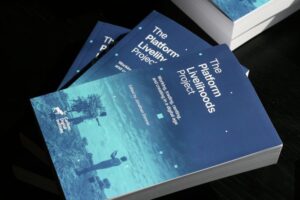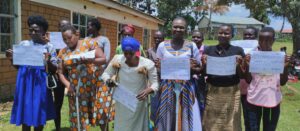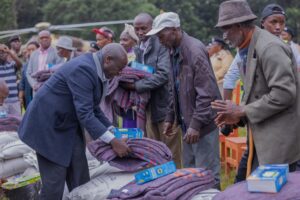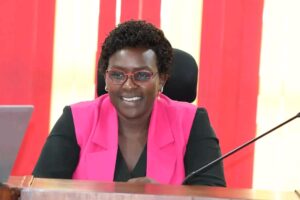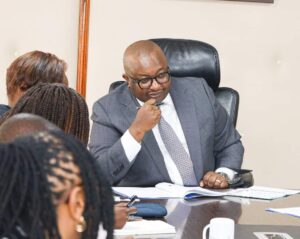Special Report: The Ruins of April 1994 Rwanda Genocide

– After the Rwanda genocide, Kigali and the whole state were counted as a dead city and country.
– Inside the tombs underneath, one is sandwiched between loads of human skulls and bones lying on shelves that are separated by very narrow corridors – not images of hell on earth but a historical reality in the neighbourhood.
You are visiting Kigali today as a city that is reviving and making strides to put a mark where many cities have led normal lives.
Fidele Ndayisaba, the mayor of the City of Kigali said this in the capital twelve years ago, on 14 June, 2011 when he addressed a delegation of political leaders from Kenya.
Exuding confidence, the mayor was quite emphatic and never minced his words before the attentive audience on the steps the government had taken post-genocide.
Mayor Ndayisaba was incisive that after the genocide, Kigali and Rwanda in general were counted as a dead city and country, but with visionary leadership and a committed population, Rwanda had not only survived but also prospered tremendously from the ruins.
He made the deep seated statement at the plenary session of visiting Councillors from Nairobi, leaders in the City of Kigali, and officials from Rwanda’s ministry of local government and some state departments at Hotel des Mille Collines in Kigali.
As Rwanda and the rest of the world marked the 29th commemoration of the 1994 Genocide against the Tutsi on Good Friday – April 7, 2023 – President Paul Kagame and First Lady Jeannette Kagame laid a wreath at Kigali Genocide Memorial, the resting place of over a quarter million victims.
President Kagame and Jeannette Kagame observed a moment of silence and lit the annual flame of remembrance that will burn for 100 days at Kigali Genocide Memorial, which is the period the genocide lasted.
April 7th has been ratified as the – United Nations International Day of Reflection on the 1994 Genocide Against the Tutsi in Rwanda.
The day marks the start of the 1994 genocide and every year, on or around that date, the United Nations organizes commemorative events at its Headquarters and at UN offices around the world.
This year marks the 29th anniversary of ethnic genocide against the Tutsi (Abatutsi by the Hutu (Abahutu) in Rwanda, one of the darkest chapters in human history.
An estimated over million people – overwhelmingly Tutsi, but also some moderate Hutu and others who opposed the genocide – were systematically killed within three months of the bloody atrocities.
April 7 is a day the world honours those who were murdered during the genocide and reflects on the suffering of those who survived.
The United Nations Secretary-General Antonio Guterres acknowledges this in his commemorative statement on April 7, 2023 saying the United Nations honours the memory of the genocide victims – overwhelming majority Tutsi, but also Hutu and others who opposed the genocide.
“On this International Day of Reflection on the 1994 Genocide Against the Tutsi in Rwanda, we mourn the more than one million children, women, and men who perished in one hundred days of horror 29 years ago”, Mr Guterres said.
The UN chief notes that preventing genocide, crimes against humanity, war crimes, and other serious violations of international law is a shared responsibility and a core duty of every member of the United Nations.
“We pay tribute to the resilience of the survivors. We recognize the journey of the Rwandan people towards healing, restoration, and reconciliation. And we remember – with shame – the failure of the international community”, Mr Guterres asserted.
Fast forward, the education tour for Councillors from Kenya was intended for the Ward representatives, as grassroots leaders, to realize how political instigation due to ideological differences, political interests or tribalism were recipes for violence that could easily bring down a country, Kenya included.
In a recent interview with Africa Renewal, Ms Alice Wairimu Nderitu, the UN Special Adviser to the Secretary-General on the Prevention of Genocide said hate speech trends along ethnic and identity lines were a rising phenomenon, especially with the advent of social media.
“We must counter hate speech firmly and robustly if we want to prevent future genocides. But not at the expenses of freedom of opinion and expression”, the UN Special Adviser said.
Lately, there have been incidents of goons invading private land and business properties in the wave of the obtaining political climate since the General Election last August.
On March 27, 2023 goons invaded Northlands farm owned by the family of retired President Uhuru Kenyatta in Ruiru, Kiambu County and carted away some sheep and trees.
A similar attack was visited on East Africa Spectre Limited, a gas cylinder manufacturing and distribution company owned by the family of Azimio Coalition leader Raila Odinga on the same day. Goons hurled stones and smashed glass windows in what could pass for planned and coordinated attacks.
Back on track, the delegation of civic leaders from Nairobi set off to Rwanda by road on a week – long learning and benchmarking tour in early June 2011 through Uganda.
As it were, the tour was sanctioned by the Minister for Local Government, Mr Musalia Mudavadi in line with government protocols. Today, Mudavadi is the Prime Cabinet Secretary in President William Ruto’s government.
All Councillors from the City Council of Nairobi were on the trip. Among them was acting Mayor George Aladwa, his predecessor Geophrey Majiwa, former mayor of Thika Municipal Council in the greater Nairobi metropolitan area, Mr Waweru Mutahi and former mayor of Nairobi Joe Akech, who was head of delegation.
A few technical staff of the City Council of Nairobi, Nairobi City Water and Sewerage Company and team of journalists were also on the entourage to Rwanda – the Land of One Thousand Hills – as it is known.
READ ALSO: Optiven Betting on Kenya-Rwanda Deal to Sell Plots in Kigali
While in Rwanda, the Councillors engaged in formal sessions with Rwandan officials on matters of local government leadership and management, among other areas of service delivery including environmental protection, water management and development of infrastructure.
The first session was organized by Kenya’s High Commissioner to Rwanda Ms Makena Muchiri, at the official residence.
It was largely a briefing session for members of the delegation. Among the take way notes was that in Rwanda, it was prohibited to ask a person about his or her ethnic community. The Councillors and all other members were advised to strictly conform and comply accordingly throughout their stay in the country.
As Ambassador Makena Muchiri would put it, this requirement in Rwanda forms part of the healing process after the genocide that was occasioned by extreme ethnic hate against the Tutsi by the Hutu.
The delegation’s itinerary included visiting various genocide sites, both in the capital Kigali and the countryside.
A day long tour of memorial sites brought the Ward representatives face to face with reality of the horrendous genocide that ravaged Rwanda about three decades years ago.
Early this month on Tuesday April 4, 2023 President Ruto was in Rwanda on his first state visit as head of state following his election last August. According to The New Times, President Ruto laid a wreath at Kigali Genocide Memorial and paid tribute to victims of the 1994 genocide against the Tutsi.
The Memorial has permanent exhibitions which give insights on the causes and consequences of the genocide and Rwanda’s on – going efforts towards fostering peace, unity and reconciliation in the East African Community country.
Apparently, the post election violence which occured in Kenya in December – January 2007/8 would appear to be a pale shadow of the genocide that happened Rwanda.
At the various memorial sites, the Councillors were exposed to tonnes of human skeletons – heaps of skulls, bones, coffins containing human remains, shoes, children’s toys, clothing and beddings – of the genocide victims who were butchered in the most horrifying ethnic violence of the 20th century.
The political leaders were visibly dumbfounded as guides took them around inside the well kept underground memorial tombs, to witness the aftermath of the genocide.
Inside the underground tombs that are partitioned like shelves in supermarkets, the atmosphere became unbearable to most of the leaders, some with teary eyes, as the guides narrated the harrowing accounts of how victims met their deaths in the most cruel manner.
While inside the tombs underneath, one is sandwiched between loads of human skulls and bones lying on shelves that are separated by very narrow corridors – not images of hell on earth but a historical reality in the neighbourhood.
The remains of thousands of genocide victims in the mausoleum at Kigali Memorial Centre, those at Ntarama and Nyamata memorial sites and the large mass graves under concrete slabs were heartbreaking to the delegation.
At Kigali Memorial Centre, some of the deadly crude weapons that were used by the attackers, which include pangas, machetes and clubs have also been preserved for posterity in memory of those who were killed.
Skulls and bones from the victims’ limbs as well as photographs preserved at the memorial sites depict intense brutality that was meted out to the Tutsi at the height of the genocide.
Nerve chilling accounts by guides at Ntarama and Nyamata genocide memorial sites revealed that human skeletons preserved at the sites were mostly of women and children, some as young as two years and even infants.
Over 5,000 Tutsi who had sought refuge at Ntarama Catholic Church were brutality killed by heavily armed Interahamwe militia in the church garden. Some were slain inside the church house.
The victims were either shot or slashed using machetes and some burnt inside the two Catholic churches – Ntarama and Nyamata – where they had sought refuge as the only places of hope, but all was in vain.
Use of grenades and automatic gunfire helped to break steel doors and create gapping holes in the walls of the church buildings during the attack. Identity cards were used to single out the Tutsi for extermination by their attackers.
Children who did not succumb instantly would be smashed against the church walls, leaving indelible blood stains that bear witness of the atrocities which were committed at Ntarama Catholic Church, now a genocide memorial site. Sunday school children at the Church were burned inside their learning room.
Nyamata Genocide Memorial Site was a Catholic Church when genocide broke out. Guides at the memorial site said there were more than 10,000 people who had sought refuge at the church.
Given the huge number of Abatutsi who were at the church premises, government soldiers are said to have stepped in to backup the Interahamwe militia in exterminating the victims using modern weapons.

Grenades were hurled to break doors before the Interahamwe stormed the church precincts to embark on a killing spree in the most gruesome manner to behold.
Very sad accounts of the ordeal were narrated, how the attackers first ensured all roads leading to and out of Nyamata were sealed off before they embarked on the massacre at the church. The victims were left at the disposal of their killers, without any escape routes. Many women were raped before being killed.
Inside former Nyamata Catholic Church house today, clothes, rags and identity cards that belonged to the victims are strewn on the benches, depicting a grim picture and sad memories of the past.
Nyamata Genocide Memorial Site has a big underground tomb where human skulls and bones have been preserved besides a large mass grave where thousands of the genocide victims were buried.
Due to extreme violence, no family could make arrangements to inter their relatives. Most families were completely wiped out and decomposing bodies of the victims left strewn all over their villages, along the roads and footpaths or inside thickets where the assailants found them.
Bullet holes are seen in the roof at Nyamata Catholic church while the altar was adulterated with blood stains of the genocide victims who were butchered in the church.
Between April and June 1994, an estimated one million Tutsi were butchered in ethnic genocide within a span of 100 days. They were killed by the Hutu majority backed by Interahamwe militia in a most horrifying ethnic attack that shocked the whole world.
After the genocide, the international community regarded the City of Kigali as a dead city while Rwanda was branded a dead country. However, with determination of the country’s leadership, the people’s resilience and hope, Rwanda has steadily risen from the ruins of genocide to assume a remarkable place among the community of nations.
The government of Rwanda has deliberately reserved 16 major genocide memorials and numerous other small ones strewn all over the country, to preserve the memory for posterity.
Kigali Memorial Centre, Ntarama and Nyamata genocide memorial sites are among the major ones.
The Institute of National Museums of Rwanda is involved in awareness programmes designed to revitalize cultural tourism and promote the country’s heritage, including campaign against genocide.
The governor of Kisii County today, Mr Simba Arati was among the Councillors while serving as a nominated Councillor then. He would later be elected MP for Dagoretti North for two consecutive terms between 2013 and 2022. Mr Arati progressively contested for ran the gubernatorial seat in the August 2022 General Election.
Mr Aladwa was later elected MP for Makadara and is currently serving a second term. Mr George Theuri served as a councillor for one term and was elected MP for Embakasi West for two consecutive terms. He lost the seat in the last August polls.
Mr William Kinyanyi who formerly served as deputy mayor of Nairobi is currently Deputy Speaker of Siaya County Assembly where he is serving his second term as an elected MCA.
Other civic leaders on the Rwanda delegation who are still in active politics include Robert Mbatia, Oscar Lore, Anthony Kimemia, Majiwa and Catherine Apiyo. They are Members of Nairobi City County Assembly (MCAs).
The UN Secretary-General says it is a generation since the genocide and the international community must never forget what happened but ensure future generations always remember.
“Let us truly honour the memory of all Rwandans who perished by building a future of dignity, security, justice, and human rights for all”.
In his commemorative statement on April 7, 2023, Mr Guterres points out how easily hate speech as a key indicator of the risk of genocide turns to hate crime. He notes that complacency in the face of atrocity is complicity.


